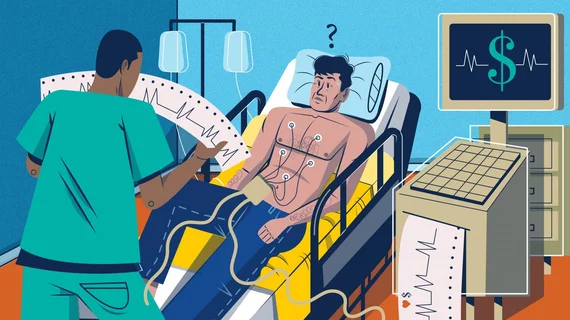Majority of patients receive unnecessary imaging and other tests before low-risk surgeries
Most patients receive unnecessary imaging or other testing before routine surgeries despite efforts to curb this practice, Michigan Medicine reported Monday in JAMA Internal Medicine.
Such low-value testing can include chest X-rays or ultrasound of the heart. These tests at the very least add extra costs that do not improve outcomes and in worst-case scenarios lead to procedure delays and even more testing.
Wanting to better understand this issue, the Ann Arbor-based university and the Michigan Value Collaborative looked to statewide data from Blue Cross Blue Shield. Across three low-risk procedures, almost 52% of patients or nearly 21,000 received at least one low-value test. Another 29% (12,000) received two, while 13.5% (5,000-plus) underwent three or more.
“There aren't that many areas in medicine where the data is pretty definitive that something is low-value," said Lesly Dossett, MD, division chief of surgical oncology at Michigan Medicine, “but preoperative testing before low-risk surgeries is certainly one of them.”
For the study, Dossett and co-authors analyzed BCBS of Michigan surgery data for care delivered between 2015 and 2019. They included adult patients who underwent preoperative testing for 1 of 3 ambulatory procedures—removal of the gall bladder, repair of a groin hernia or removal of cancerous breast tissue. They looked for receipt of at least one test in the 30 days leading up to surgery, including echocardiograms, cardiac stress tests, chest radiography and pulmonary testing.
Roughly 40,000 patients met the study criteria, at an average age of 59. Blood cell counts was the most common low-value test, with 33% of patients receiving one, followed by electrocardiograms (25%), and basic metabolic panels (11%). Digging further, Dossett et al. found that patients who underwent a separately billed preop history and physical exam were more likely to undergo testing. Roughly 12% of variance was attributed to hospital-specific differences.
“The findings of this study suggest a role for deimplementation strategies that target specific hospitals. There is a growing consensus that strategies must leverage conceptual frameworks targeting institutions, in addition to individual health care practitioners,” the authors concluded.

